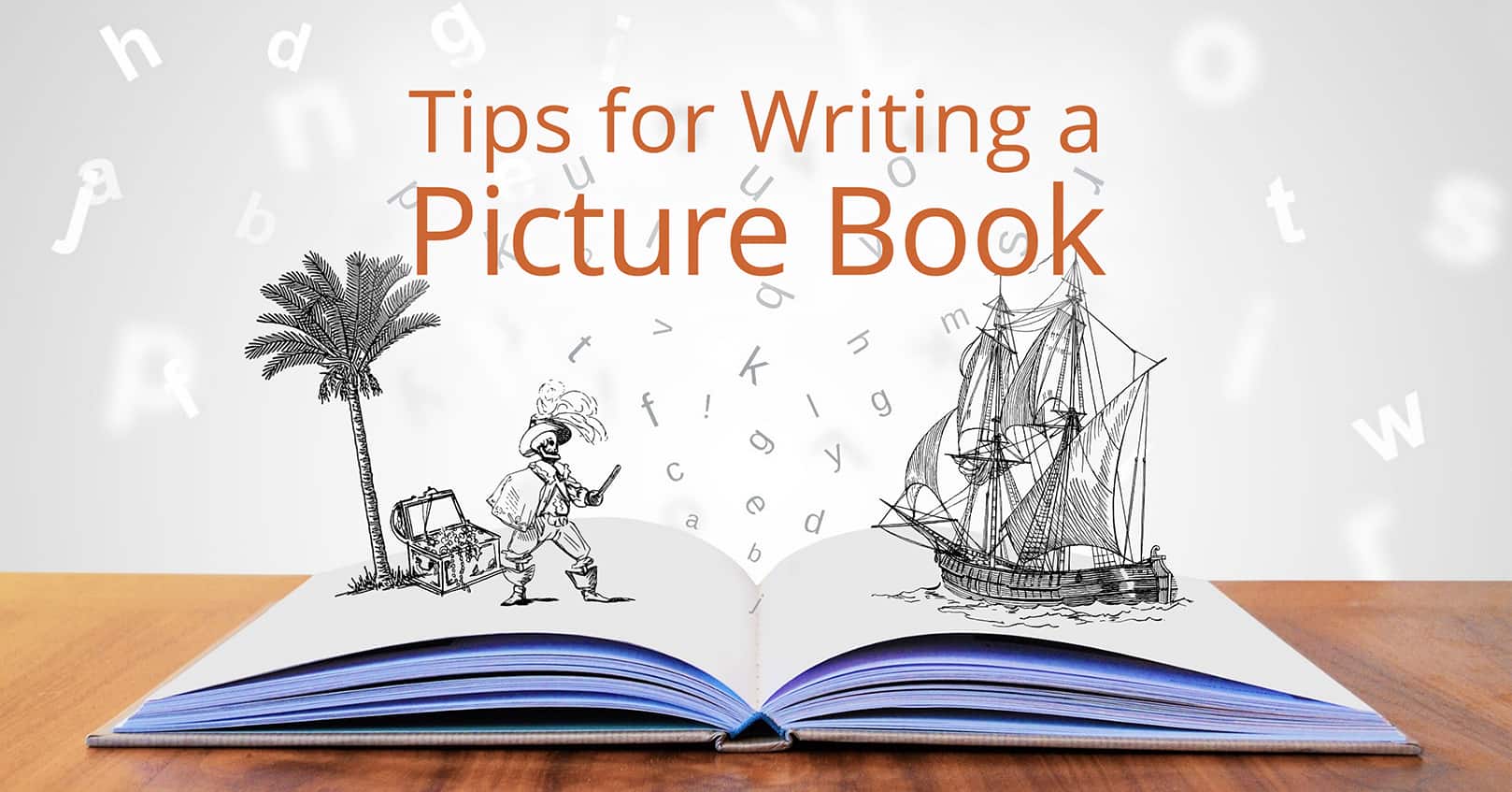
Thinking of writing a picture book? Here are 20 tips to help you on your journey!
- Keep notes on ideas for picture books. One great way to do this is to be around children and just listen and note the hilarious or surprisingly deep things they say. One of these can lead to a great story idea!
- Pick a subject and experience that is relatable to children but that also appeals to parents because it teaches a lesson.
Decide what age group you’re writing for—this will determine what length your book should be.
Ages 0-3: 0-200 words (board book)
Ages 2-5: 200-500 words (early picture book)
Ages 3-7: 500-800 words (picture book) - Read popular picture books that are geared toward the same age group you want to write for. Make notes of what you think made the story successful and what reviewers say they like about the book.
- Read popular books that cover the same topics and lessons that yours will cover. How will yours be different from those?
Write simpler sentences that children will understand, but don’t be afraid to put in a few larger vocabulary words for them to learn. - Use repetition to increase reader comprehension; this can be repetition in words, concepts, or plot points.
- Your picture book doesn’t have to rhyme, and it’s hard to get rhyming right. If you do want to rhyme, remember that rhythm is also important, and you’ll need to avoid sacrificing the story or writing wordy sentences just to get a rhyme.
- Remember that you still need well-developed, deep, unique characters. Because picture books are so short, it’s tempting to write shallow characters. One way to avoid this is to create a character questionnaire and really get to know your character before writing the story. Even though you won’t cover a fraction of that information in the book, the character’s depth will shine through in their actions.
- Make the problem the main character is facing something that is hugely important to them—and make them face obstacle after obstacle and fail solving the problem multiple times before they succeed.
- Reword your writing to show instead of tell. And remember that the illustrations do a lot of the showing, so you don’t have to explicitly tell the reader nearly as much as you would in a novel. For example, an illustration may show that the main character is angry, so you don’t need to tell the reader they’re angry—just show with words what happened to make them feel that way. The illustration and text should compliment each other.
- Keep notes on each page with information you want your illustrator to include that isn’t in the text itself.
- Edit out unnecessary information. Removing extraneous material is especially important in a children’s book. Every word should count!
- Jump right into the main part of the story on the first or second page. You don’t have time for backstory or setting the scene with a picture book.
- Read the story out loud.
- Send the book to a professional picture book editor. Yes, even though it’s “just” a children’s book, grammar, punctuation, capitalization, and flow are still important!
- If you are self-publishing, find an illustrator whose illustration style you already like rather than expecting them to adapt to your stylistic vision. If you are publishing with a publishing house, don’t find an illustrator before sending in your book; publishers always hire their own illustrators.
- Work with the illustrator on font choice and text placement, as well as how to break up the text across pages. Since illustrators are very visual, they’ll be able to give you valuable help.
- Read over the book again once the illustrations are finished. You may find yourself cutting out more text, rewording, or adding additional information so the text and illustrations better compliment each other.
- Read the story to different children and get their feedback.
- Have other families read the book aloud to their children and give you feedback.
- Choose a title once the inside of your book is finished, and don’t be afraid to revise it and get feedback. Choose something that shows action and leaves the reader wanting to find out more.
Have you written a picture book? What did you learn during the process? Let us know in the comments below!
















Comments